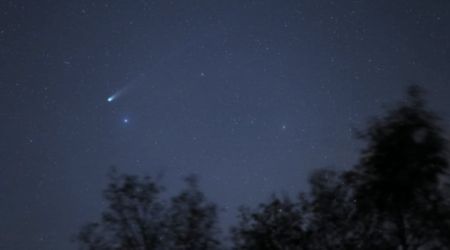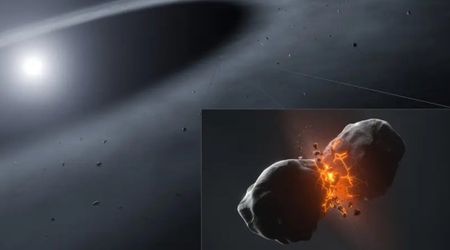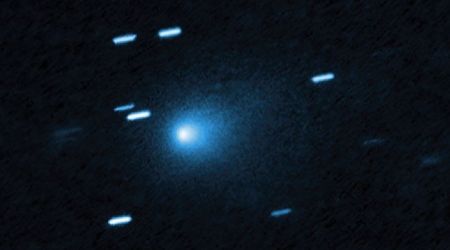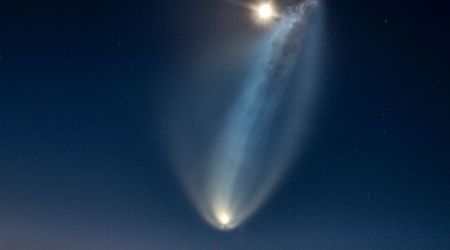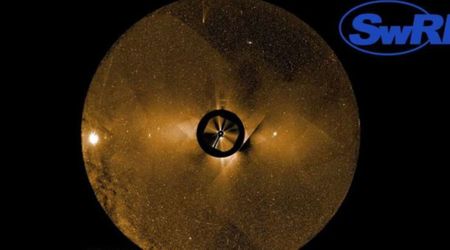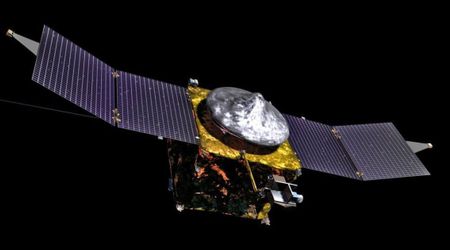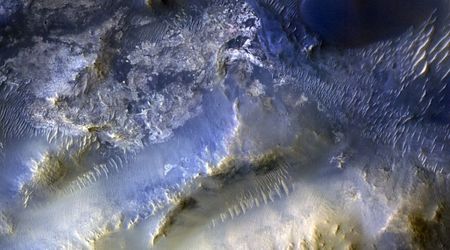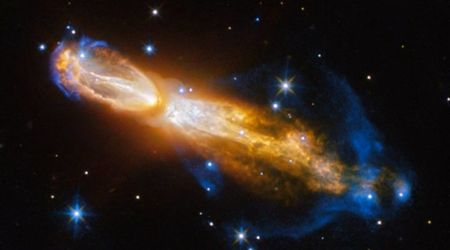Spectacular first images from Rubin Observatory reveal 2,104 asteroids — millions more yet to be explored

The Vera C. Rubin Observatory's first image release conference showcased multiple specks of newly discovered asteroids. Within a few nights of data collection, the observatory identified 2,104 never-before-seen asteroids in our solar system. According to the Vera C. Rubin Observatory, the capture included seven near-Earth objects (NEOs), 11 Jupiter Trojans, and 9 trans-Neptunian objects. It also recorded around 1,800 additional objects that were previously known objects, for a total of almost 4,000 detections, indicating the majority to be new findings.
The NEOs are shown in yellow-orange and moving quickly across the frame, most of them being asteroids, and some comets. A few could be headed on a collision course with Earth, and most NEOs were larger than one kilometer across. The first collection of findings had 2015 asteroids in teal moving in the same direction as their solar orbit, forming the asteroid belt findings. The additions to the Jupiter Trojans are asteroids that share Jupiter’s orbit around the Sun. Two stable and gravitationally balanced regions called Lagrange points are where these are gathered.
More than 2,000 new asteroids ☄️
— SLAC (@SLAClab) June 23, 2025
See how @VRubinObs has discovered thousands of asteroids over just a few nights of data collection, and why it is expected to discover 5 million more: https://t.co/c9ACR5NkiU pic.twitter.com/YNBhZC6jc2
The newly found trans-Neptunian objects (TNOs) are shown in purple, with slower motion than the other objects due to their distance from Earth. They are icy objects in the outer Solar System, and leftovers from planet formation, which are too faint to be easily observed. The video closes in on the Virgo Cluster to discover these asteroids as they fill the space observed. The section is a small part of Rubin's capacity to detect thousands of brand-new space rocks in one night. The observatory will soon be releasing incredible 10 years of time-lapse footage of the entire southern night sky.
Meet your new cosmic neighbors ☄️
— NSF-DOE Rubin Observatory (@VRubinObs) June 23, 2025
Introducing a swarm of over 2100 asteroids discovered by NSF–DOE Rubin Observatory!
Rubin discovered these asteroids in about 10.5 hours across 7 nights.
They've never been seen by humanity before...until now.https://t.co/kV788OjB6O
"This is five times more than all the astronomers in the world (have) discovered during the last 200 years since the discovery of the first asteroid. We can outdo two centuries of effort in just a couple of years," stated Željko Ivezić, the deputy director of Rubin's Legacy Survey of Space and Time, according to Space.com. Several asteroid streaks were removed from the final renderings, as they obstructed the view, which indicated that they could be handpicked and isolated. The different colors note it at various wavelengths, and its motion can be tracked against the space background.
🚨Epic! NSF–DOE @VRubinObs discovered 2,104 never-before-seen asteroids in our Solar System! ☄️
— NOIRLab (@NOIRLabAstro) June 23, 2025
Currently, all the world's observatories discover ~20,000 asteroids per year. Rubin discovered over 2,100 in just a few nights!
📹: RubinObs/NOIRLab/SLAC/NSF/DOE/AURA#RubinFirstLook pic.twitter.com/OfVHp7WnOV
Asteroids, being one of the smallest details of space, can be easily recorded with the super-fast, super-efficient, and super-thorough cosmic imager. The Rubin Observatory, recording massive data on the asteroids in space, could prove useful for a better study of their movements. This could add to the efforts of planetary defense, allowing scientists to be better prepared for potential catastrophes. The color variation in observation also helps differentiate objects that are observed for movement, like stars and asteroids, and objects that change brightness.
💫See the night sky like never before. Today, the NSF–DOE @VRubinObs releases its first imagery, capturing the cosmos at an unprecedented scale.
— U.S. National Science Foundation (@NSF) June 23, 2025
#CaptureTheCosmos pic.twitter.com/kZcdvCt6qh
According to the Vera C. Rubin Observatory, the telescope will be capable of detecting millions of new asteroids in 1-2 years of the Legacy Survey of Space and Time. This will become the most reliable tool to spot interstellar objects, brief appearances of objects outside our Solar System, and rare objects in the cosmos. Rubin Observatory employs next-generation asteroid discovery algorithms at an unimaginable scale. Located at the summit of Cerro Pachón in Chile, its observations will quadruple the known number of small bodies in the Solar System in a decade.
